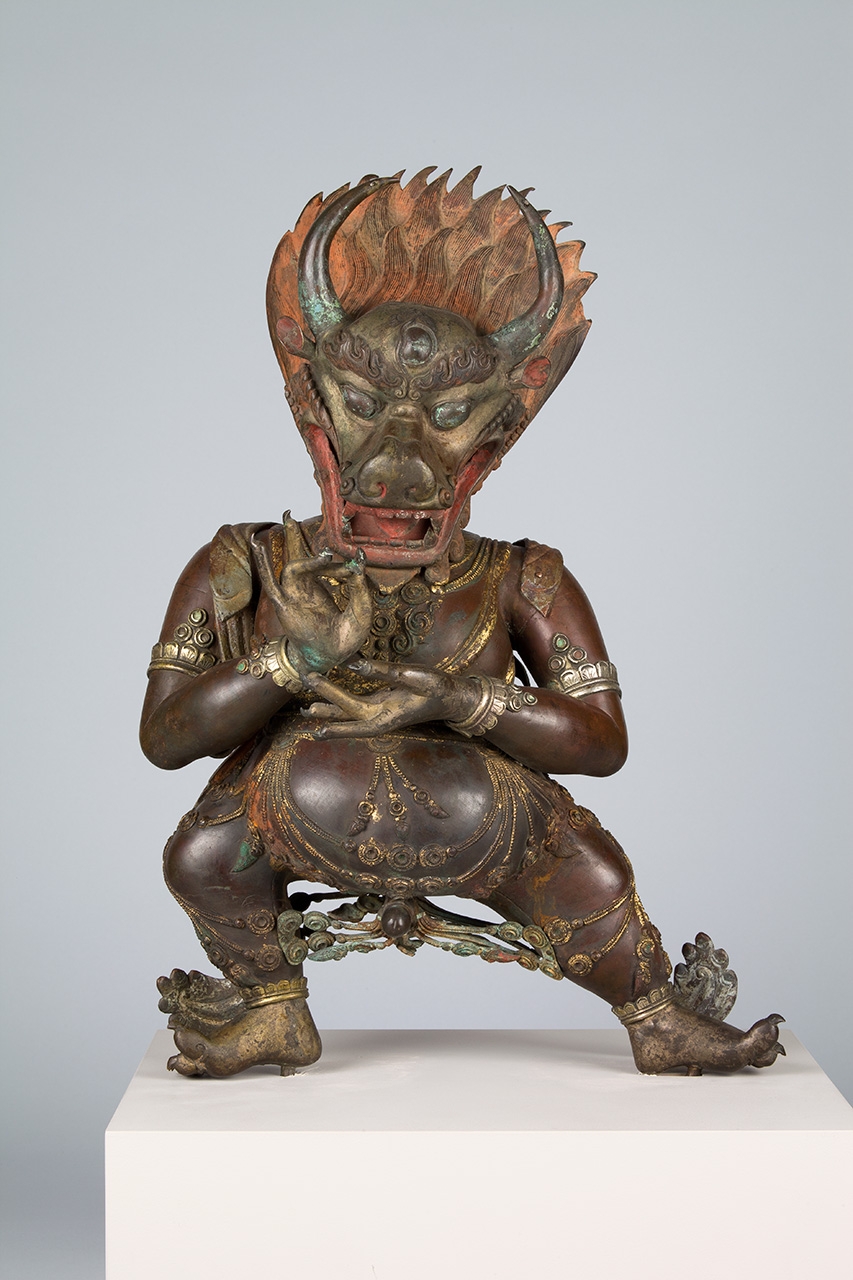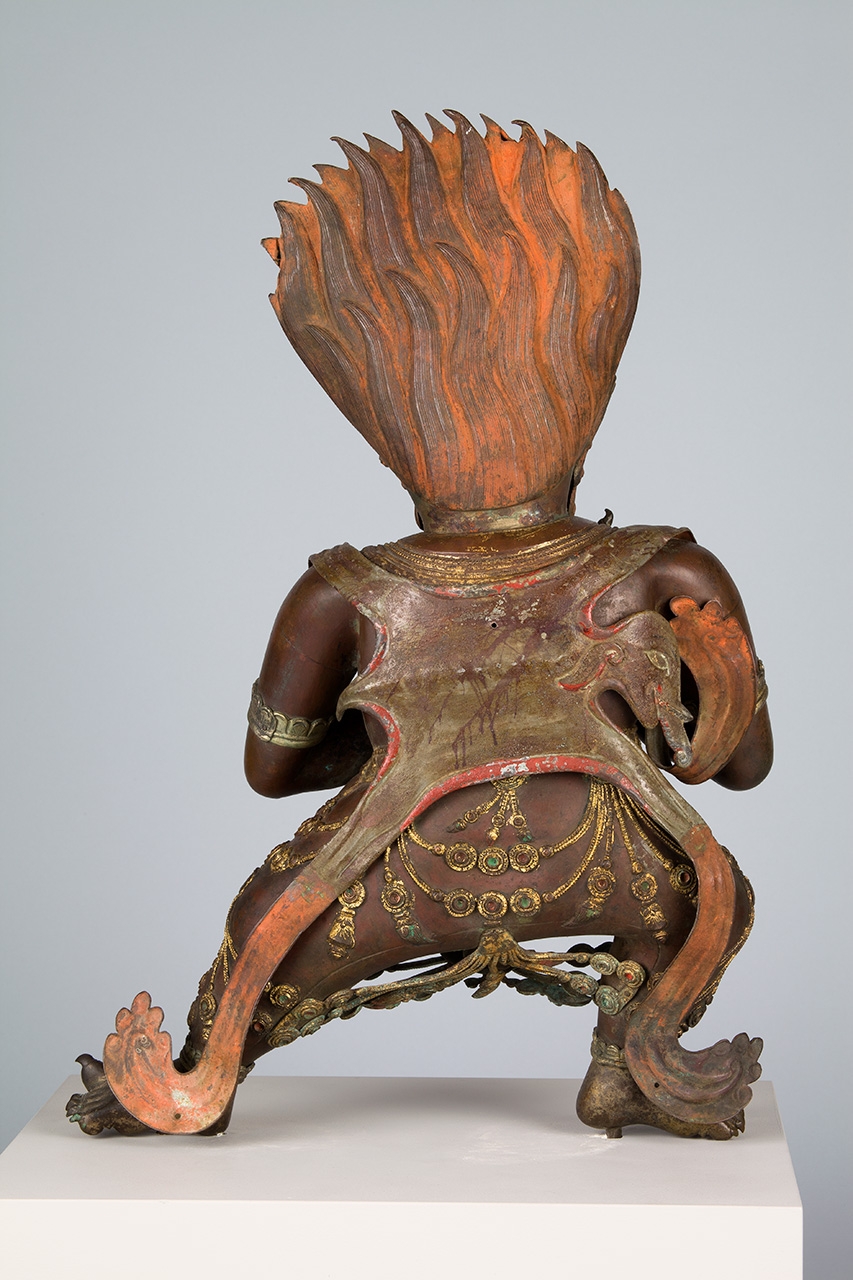
Vajrabhairava is one of the most important deities of the Geluk School of Tibetan Buddhism, which has dominated Mongolian religious life in recent centuries. This sculpture is assembled from pieces of copper that have been shaped by hammering them from behind, a technique known as repoussé. The joints where the various pieces have been connected are hidden by the figure’s decorative elements such as armlets and bracelets, while the hands and feet were cast separately using the lost wax technique.
The artists of Dolonnor, in Inner Mongolia, were masters of repoussé, and in the eighteenth and nineteenth centuries they produced many Tibetan Buddhist images for China’s Manchu imperial court and monasteries across the Tibetan Buddhist world. This sculpture’s separately attached ornaments made of thin strips of hammered copper, such as the elephant skin draped over Vajrabhairava’s shoulder, are characteristic of the Dolonnor style.
H 17 1/4 x W 12 1/2 x D 6 3/4 in.
C2005.27.3, HAR65552
- https://dev.rubinmuseum.org/images/content/761/c2005.27.3__zoom.jpg
- https://dev.rubinmuseum.org/images/content/761/c2005.27.3_back__zoom.jpg
- https://dev.rubinmuseum.org/images/content/761/c2005.27.3__zoom.jpg
- https://dev.rubinmuseum.org/images/content/761/c2005.27.3_back__zoom.jpg


